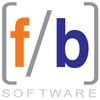The technological changes that have swept the world in our lifetime are mind-boggling with the first personal computers released in the 1980s, the internet as we know it today launched in the 1990s, iPhones introduced in the 2000s, and the rise of cloud computing over the last decade.
For business and the workplace, the digital revolution has ushered in advances not thought possible just a few years ago.
“Every business dreams of becoming a well-oiled machine with zero wasted time or money. While that might be a little far-fetched, we are closer now than we have ever been,” writes Ramin Edmond for GaggleAMP. “Technology is constantly evolving, and many businesses are reaping a wide range of benefits.”
Technology Transforming the Food Industry
Technology is making business more efficient and helping organizations streamline operations and internal controls across all sectors, including the food industry.
“Over the past few decades, technology has become integral in our lives. From drones to automated processing to robots, we now have access to numerous innovations – and the food industry has experienced noteworthy transformations as well,” says American Dining Creations.
Three ways that technology is changing businesses from food production to food distribution to food delivery is:
- Cloud Computing Leads to Flexibility, Productivity, and Cost Savings
- Business Communication Tools Make Problem-Solving Easier
- Save Time and Money by Automating Backend Business Tasks
Here is a closer look at all three:
Cloud Computing: Flexibility, Productivity, Cost Savings
Cloud data storage and computing have allowed businesses to reap the benefits of flexibility, productivity, and cost savings.
“Employees can now access any document or application they need regardless of if they are in the office or not. While working from home, they have just the same amount of tools and documents they would at the office, or while on vacation they can review any time-sensitive issues with ease,” writes Edmond. “The cloud has a major role in helping entire businesses become more efficient by utilizing their physical space better and reducing maintenance costs. By keeping a majority of data on the cloud, you don’t have to take up office space with large servers but can instead use that area for more productive means.”
When food distributors take advantage of FreshByte Software’s F/B Cloud business solution, for example, they realize many advantages including:
- Save the cost of needing their own hardware on-premises.
- Accessibility to connect to FreshByte Software from any location, or any device that has an internet connection.
- Protects data loss with secure back-up in the cloud and keeps cybercriminals at bay with the power of the cloud’s firewalls, SSL encryptions, and DDoS protection services.
- Increases productivity as your workforce can complete more tasks in less time.
Problem-Solving is Easier with Business Communication Tools
From Zoom to Slack to VoIP, business communication tools have rapidly evolved, even allowing workers to remain connected during the COVID-19 pandemic.
“Clear and frequent human interaction and communication is the key to helping everyone remain productive by providing quick and actionable feedback, helping solve problems, and sharing expectations on projects,” says Edmond.
The ability in the food distribution business to have all customers and employees working and communicating on the same portal is a true competitive advantage.
FreshByte Software add-on features such as Fresh Portal and their Customer Facing app allow such features as:
- Ability to receive item usage history, price lists, and customer statements.
- Order history allows customers to see expected orders, new orders, orders in process, and shipped and billed invoices and scanned images.
- A shopping cart saves products selected by customers and once they are ready to place an order, it is submitted automatically and immediately.
Prior to technological advancements, all of these processes would involve reams of paperwork and innumerable man-hours leading to delays and long lead times.
Automating Backend Business Tasks Saves Time, Money
The modern story of technology is about saving time and money as tasks, previously done manually, become automated.
In business, digital advances are making some backend business tasks a thing of the past.
“By removing the monotonous tasks that employees have to deal with, companies can reach new levels of productivity,” writes Edmond. “Automation can reduce error rates to zero percent and can execute a high volume of repetitive tasks across many platforms. Companies can also free up many resources that were previously being used and allow employees more free time to accomplish large projects.”
In the food industry, the new software allows businesses to streamline not only distribution but to simplify traceability, accounting, and inventory control.
Automation is making advances on many fronts in the food industry including:
- Robots and advanced machines
- Drones
- Smart sensors
- Blockchain
- Artificial Intelligence and Machine Learning
- Internet of Things (IoT)
The food chain has been made safer with innovations, such as FreshByte Software’s traceability software, which allows food distributors to fully utilize the technologies that handle new barcodes and RFIDs on products.
This includes the ability to use hand-held PDAs and laptops to automatically verify that the correct products and quantities have been picked against each shipping order and that the routing is correct, all the while storing and tracking the originating vendor information with each item sold.
These are advances that combine the best of technological advances over the last four decades from laptop computers to the internet to mobile devices to the cloud. The result is an ever-changing food industry.
“The food industry continues to move away from traditional ways of farming, food packaging processes, and food distribution methods. Enter technology, and the world of robots, sensors, and kiosks,” says Sial America.





